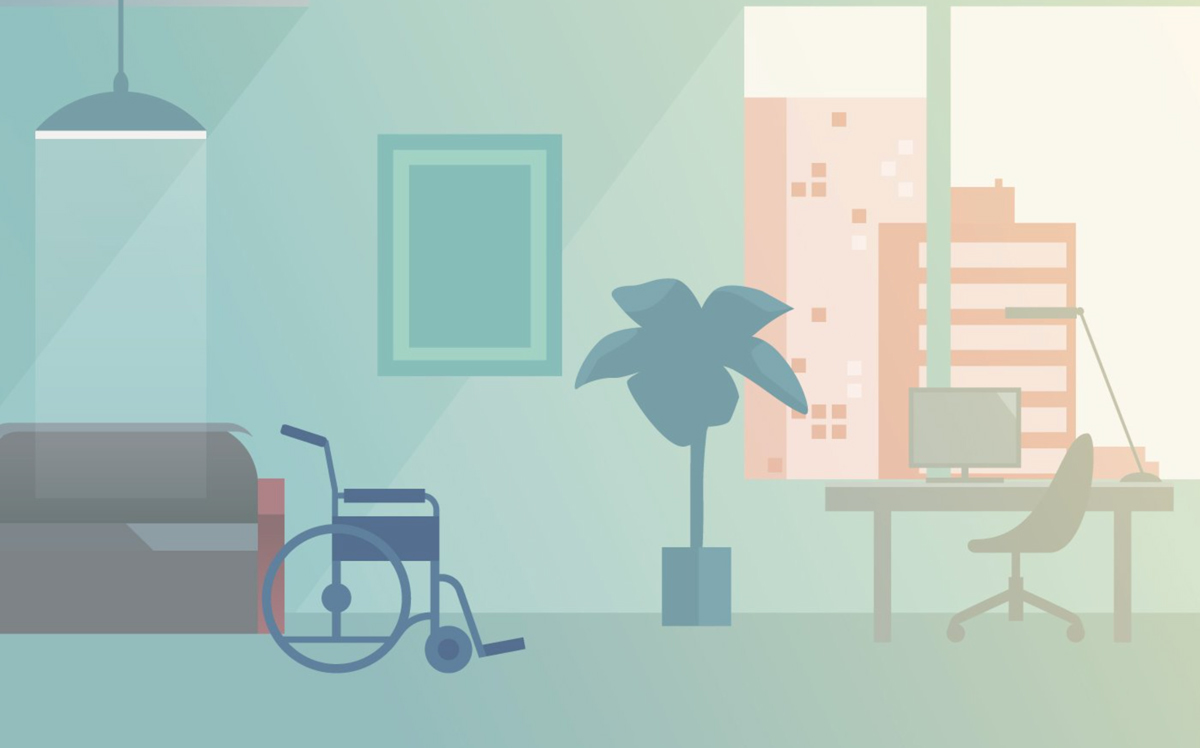 Co-Living Through a Pandemic
Co-Living Through a Pandemic
Trending
Virtual tours are a life saving tool for senior living properties

Senior housing, like the rest of the world, has changed quite a bit in the last six months, but it’s fair to say that this sector of commercial real estate has been disproportionately affected compared to others. Its residents are, by definition, more susceptible to COVID-19 transmission and are largely at a higher risk of dying if they do contract it. For these reasons, senior living communities have had to rethink their operations and business strategies in order to keep residents safe.
The senior housing market is often seen as recession-resilient because senior care is a necessity, and the market is poised to grow, according to data that shows growth in the aging population in the U.S. By 2050, about twenty percent of the U.S. population will be over the age of 65, whereas in 2019 that percentage was about 15.6 percent. Everyday, 10,000 new Americans turn 65, so imagine how quickly those numbers compound. A recent study from the U.S. census bureau estimates that (with continued high levels of net international migration) the total U.S. population will reach 458 million people by 2050, meaning that there will be 91.6 million people over the age of 65 by 2050.
Read more
 Co-Living Through a Pandemic
Co-Living Through a Pandemic
 COVID-19 Panic Highlights the Importance of Tenant Communication
COVID-19 Panic Highlights the Importance of Tenant Communication
 The democratic promise of the internet is finally coming to building management
The democratic promise of the internet is finally coming to building management
Granted, some experts in the industry still believe there is an oversupply of competition. In 2016, data from developments and construction for senior living properties was beginning to show that perhaps there was more than enough to satisfy the market. If this is true, it means that senior housing marketing strategies will be vital to ensure property owners and operators stand out amongst the competition. So what does a good senior housing marketing strategy entail in today’s climate?
Senior Living Smart is a marketing company that specifically tailors to senior housing developments, and they’ve created a brief guide to streamlining marketing strategies in a post COVID-19 world. In addition to utilizing social media for lead generation and creating turnkey content on a regular basis, the company also recommends virtual tours become a staple for properties. During the pandemic’s lockdown, we witnessed virtual tours become a key marketing tool for almost every asset type, not just senior housing. Now, in order to ensure resident safety, virtual tours make the most sense as they prevent unnecessary exposure and risks that can happen with in-person tours.
Liv Generations is a senior living community owner/operator located throughout Arizona, and they recently created virtual tours of all of their properties. They used VirtualAPT, a company that specializes in producing high end 360-degree video tours for commercial properties by using an autonomous robot to film the space. Rather than bringing in an entire production crew that puts residents at risk during filming time, VirtualAPT captured all of their properties, their amenity spaces, neighborhood tours, and individual units with various layouts in a matter of days, using only one robot and one operator. “We decreased time spent on property with far less people, making it a safer filming experience but still allowing Liv to market to wider audiences more effectively,” said Bryan Colin, CEO of VirtualAPT.
In some cases, properties around the country restricted access to only workers who were vital to operations, making in-person property visits or tours impossible. As virtual tour policies are integrated for resident safety, sales staff will have to learn to rely on these marketing assets as their primary tools. Similarly, tech integrations in senior living are expected to become the norm in a variety of ways, not just for marketing.
A recent report “The COVID Effect: Technology Adaptation in 2020 Senior Living’s Next Tech Boom” by Senior Housing News states, “A range of pandemic-related factors—such as new clinical protocols and social distancing—have increased the industry’s need for and adoption of a variety of technologies. These include resident monitoring, contact tracing, telehealth, virtual tours and more.” In addition to accelerating the adoption of tech on a property level, Covid has also given individual seniors the time and excuse to learn how to use technology for various reasons.
John Jones is a writer who focuses on the intersection between real estate and technology, and he recently wrote an article exploring tech integrations in senior living. According to Jones, “As we move toward a more tech focused population, where literally, technology is a part of our everyday lives, this is something seniors are actually going to look for and their caretakers will look for before selecting a senior living property.” While perhaps now, adapting to technology is a challenge for some seniors, eventually, it will be something they seek out when choosing a property and therefore an aspect of the property that is highlighted through marketing.
Seniors may be more tech savvy than we give them credit for. Whether it be a cooking class over zoom, chair yoga taught in a series of Youtube videos, or simple tutorials on how to use technology to stay connected to family, seniors are learning how to integrate technology into their everyday lives. In order to stay connected with family throughout this time, older folks that live in all kinds of places—not just senior communities—have become well acquainted with technology like video chat and Facetime. So, it stands to reason that seniors will be able to use digital tools to help them and their loved ones make decisions about their care facilities.
Society as a whole is adapting to a more virtual, digitized life as we learn to social distance and limit in-person interactions. For seniors, this is especially important as they are more vulnerable to the effects of pandemic and often have compromised immune systems. Taking advantage of technology like virtual tours to market senior living properties is not only more effective now, but arguably, more responsible and ethical. [Propmodo]




